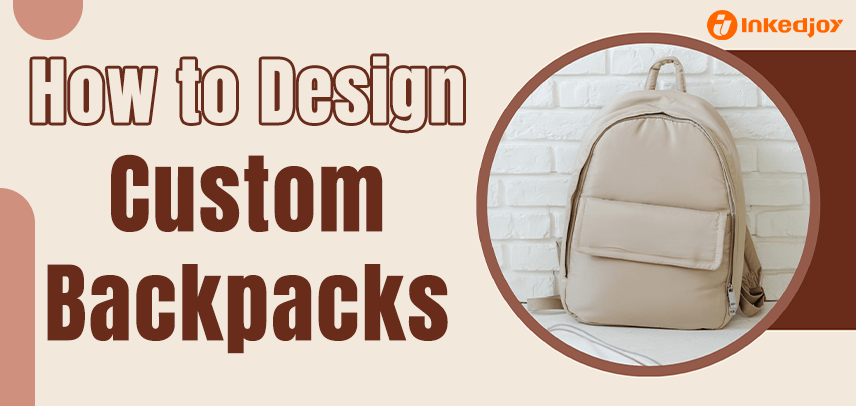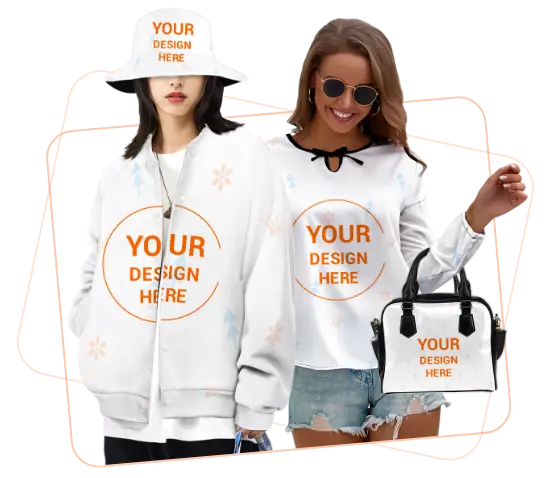
How to Design Custom Backpacks for School or Travel
Personalized backpacks are now the ideal means of self-expression while simultaneously addressing daily functional needs. Whether it is designing a one-of-a-kind school backpack or producing travel equipment that is easily recognized, the process unites style and function. Contemporary design software allows the user more than ever before to turn personalized backpack designs into reality with professional quality outcomes.
Planning Your Custom Design Elements
Begin with Visual Concepts
The key to excellent backpack design is deliberate thinking. Begin drawing ideas on paper or utilize computer software to visualize the concepts. Think about how the numerous design components will appear on the various surfaces of the backpack – front pocket, main pack, straps, and side compartments all present various canvas possibilities.
Apply Color Psychology
Color psychology is also a large part of design appeal. Young, bright colors such as orange or electric blue are great for appealing to younger students and as eye-catching travel accessories. Neutrals such as black, gray, or navy are versatile and professional-looking for older students or business travelers. The use of complementary colors adds visual appeal without causing the overall design to be overwhelming.
Select Proper Patterns
Pattern selection has a significant influence on overall appearance. Geometric patterns provide modern, clean appearances that are ideal for schools. Nature-inspired patterns like mountain ranges or botanicals are perfect for outdoor enthusiasts and travelers. Abstract designs allow for more creativity and personal style.
Review Typography Options
Text element fonts should be balanced between style and readability. Bold, straightforward fonts are ideal for names or initials, and decorative fonts add sophistication to theme designs. Think about what the text will look like when it is being worn as a backpack – don't put important text elements in areas where straps will cover them.
Step-by-Step Design Process
Step 1: Select Your Base Template
Choose a purpose-appropriate backpack style. Backpacks for school often have several compartments, padded laptop pockets, and anatomically designed straps. Travel models may have extra security measures and expanding storage space.
Step 2: Design Your Main Image
Design the primary visual component that will dominate the appearance of the backpack. This may be a giant graphic occupying the front of the main pocket, a repetitive design, or a series of smaller components strategically located on different panels.
Photo and artwork need high-resolution files for decent print output. They need to be at least 300 DPI for professional applications. Vector graphics usually give the best output for logos, text, and geometric shapes since they can be enlarged without a loss in clarity.
Step 3: Design Secondary Elements
Design complementary side panels, straps, and pockets. These need to be complementary to the design but never distract from it. Reduced logos, accent colors, or miniaturized versions of the design work well in these spaces.
Step 4: Think About Practical Placement
Try not to put important design elements in areas where they will be subject to excessive wear. Strap bottoms, strap points of attachment, and zipper pockets are most stressed during normal use. Keep important graphics away from these high-wear areas to preserve appearance over time.
Design Tools and Software Options
Web-Based Design Platforms
Modern design platforms make custom backpack designing accessible to users with varying technical expertise. Online applications offer drag-and-drop editors that are easy to use, perfect for beginners who need professional results without years of design experience.
Professional Software Solutions
Professional users can be drawn to more advanced software that gives more control of all the design elements. Such programs give exact color matching, detailed layering capability, and finely tuned customization. They take more time to learn, though.
Template Assets and Resources
Websites mostly offer pre-designed templates and design elements that act as launch pads. These assist in overcoming creative blocks while fulfilling technical specifications for effective printing. Blending template elements with customizations yields distinctive outcomes without beginning from the ground up.
Printing Technology Considerations
Consider the print quality and platform capabilities. Some services are specialized in specific printing techniques that produce different visual effects. All-over print is suitable for continuous designs that occupy the entire backpack, whereas direct-to-garment print is more suitable for placement-specific designs.

Personalizing for School Use
Reflect Academic Interests
Backpacks for school are supported by designs addressing school passions and interests. Science students may appreciate star maps or periodic table prints, and art students may incorporate favorite color schemes or artistic styles. Athletic mascots and school colors infuse school spirit but also allow for personalized taste.
Insert Name Personalization
Personalized names bring more than a dash of class. Personalized name backpacks eliminate loss and misidentification in busy school settings. Display names prominently yet discreetly by using initials or first names – usually identification enough without giving away too much personal information.
Develop Subject-Oriented Designs
Subject-specific motifs can make organization more enjoyable. Areas or sections in various colors may be utilized to demarcate space for specific classes or activities. Mathematical-based motifs can involve equations or geometric figures, and book lovers may utilize favorite quotes or book references.
Consider Grade Level Appropriateness
Grade level relevance keeps designs up to date year-round. Young elementary designs can feature bright color and cartoon characters, but teens in high school seem to appreciate more mature, trend-sensitive design that addresses nascent personal style.
Travel-Centric Design Considerations
Prioritize Cultural Sensitivity
Backpacks are both functional travel gear and a form of personal expression. Design needs to be culturally sensitive when traveling abroad – steer clear of graphics or symbols that could be misinterpreted in a foreign culture.
Enhance Visibility and Safety
Visibility elements add safety in transit. Highly visible accent colors or reflective tape render bags highly noticeable in busy airports or hostels. Think about adding world maps, landmark silhouettes, or travel quotations that initiate conversations with like-minded travelers.
Focus on Longevity
Durability is even more vital for travel gear. Design with the possibility of exposure to the elements, harsh handling by baggage handlers, and general wear and tear from repetitive use. Choose print processes and substrates that resist appearance despite unfavorable conditions.
Balance Style with Security
Safety issues can also guide design choice. Extremely flashy or obviously high-priced-looking backpacks can attract unwanted attention in some travel destinations. Balance personal expression and practical safety issues based on planned travel destinations.
Making Your Vision a Reality
Custom backpack designs transform everyday essentials into unique statements of individuality—blending functionality with personal expression. Whether for school, travel, or as a thoughtful personalized gift, these bespoke creations combine practicality with artistic flair. Platforms like Inkedjoy offer user-friendly design tools and high-quality printing, empowering anyone to craft a backpack that reflects their style while meeting life's demands.



